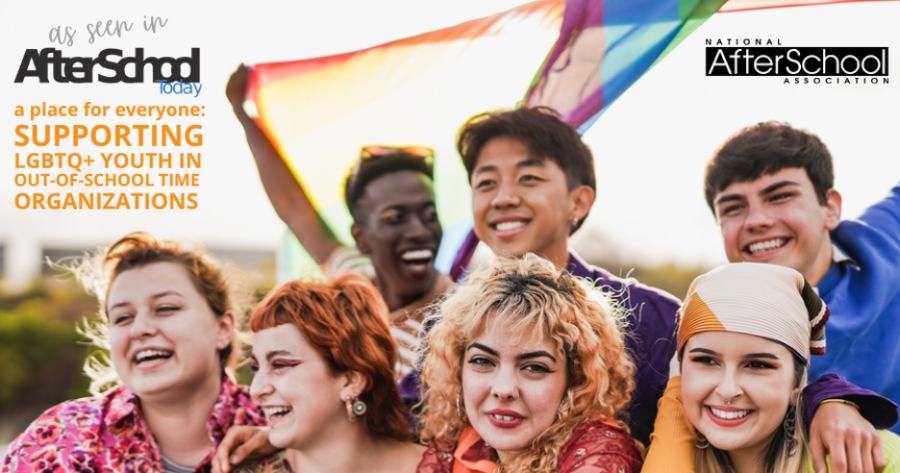Advocating for LGBTQ+ young people can feel like one of these insurmountable tasks. The Trevor Project reports that in 2022 45% of LGBTQ youth seriously considered attempting suicide in the previous year, including 1 in 5 transgender and nonbinary youth, as a result of discrimination they faced in school, social gatherings, and at home. That is a staggering statistic.
However, equally as staggering, is the finding that when trans and nonbinary young people have their pronouns respected by the adults in their lives they report suicide attempts at half the rate of other trans and nonbinary youth. In a world of big complex problems, using the correct pronoun is something we can all do without a whole lot of effort. When you start to dig into what else LGBTQ+ youth need to feel safe and supported, it turns out most of that is pretty simple too.
Not only is it simple, out-of-school organizations actually have a unique ability to change those statistics by creating inclusive organizations for all and prioritizing the well-being of their LGBTQ+ youth.
In this country, youth are provided a variety of places to feel safe and included; it is often taken for granted that home, community, church, school, sports teams, etc. are places for youth to find safety. The truth is that for many LGBTQ+ youth these are spaces that have caused trauma. In 2022 the Trevor Project found that only 37% of LGBTQ+ youth identified home as an affirming space and only 55% felt affirmed at school. Schools are often barred from supporting LGBTQ+ youth because of discriminatory policies instituted by school boards or local governments. The safety of one’s home is dependent upon the beliefs of one’s parents. Out-of-school time organizations often do not have to adhere to the same discriminatory policies and can ensure they are only hiring staff that are accepting and then provide continued training on active inclusion.
One of the easiest things your organization can do is ensure the use of correct pronouns. While it can feel difficult, asking someone for their pronouns and trying your best to use the correct pronouns gets easier as you practice. If you make a mistake and use the wrong pronoun, you can simply apologize and move forward with the correct pronoun. The effort is impactful to the young person even when mistakes are made. The use of they/them pronouns to address a singular person also might feel uncomfortable at first but it is something that we regularly do in the English language. For example, if you walked up to a table at a restaurant and saw a jacket left by a previous customer you might say “oh look, someone left their jacket, I’m going to take it to lost and found for them.” Change can be uncomfortable, and adjusting pronoun usage may have some bumps in the road, but in the end, our effort has real potential to reduce suicidal thoughts in young people.
Remember, it is impossible to know everyone’s pronouns just by looking at them; staff can model sharing their pronouns when they introduce themselves and make sure to provide the option to share pronouns when they ask young people to introduce themselves. Additionally, you can offer name tags that have a blank for names and a blank for pronouns. Lastly, you may have seen the term “preferred pronouns” used in the past but the definition of preferred is an adjective to describe something that someone likes better than something else. If they were preferred pronouns, it means that other pronouns are acceptable to use which is not the case.
Again, the youth development field faces big complex problems, but this is a solution with relatively low effort and extremely high impact. The lynchpin to creating an inclusive organization is ensuring your staff have received training specific to working with LGBTQ+ youth. Luckily, there are many fantastic resources that can help your organization with education:
- The Trevor Project - Support Center Glossary
- The Trevor Project - Guide to Being an Ally
- GLSEN - Gender Affirming & Inclusive Athletics
- The Safe Zone Project - Learn
- Human Rights Campaign - Schools in Transition
Contributed by Founder of Clarke Hill Consulting and Co-Founder of Queer Connect, Clarke Hill. Originally featured in the Spring 2023 edition of Afterschool Today.

